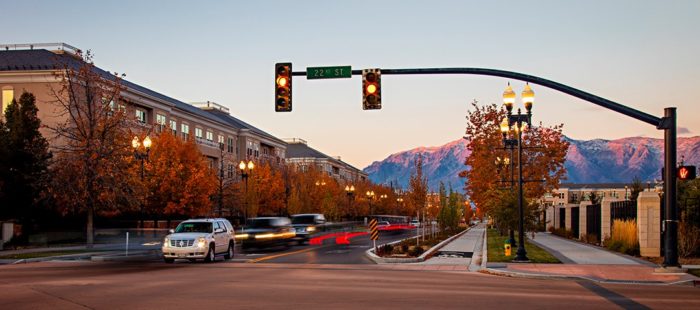Design Roadways at the Speed Limit, NOT 5mph Over

Part 2 in a 3-part blog series showing how roadway design should control vehicle speeds, not speed limits.
The perception of vehicle speeds differs tremendously from those outside the vehicle. It is more difficult to differentiate between 30 mph and 45 mph as a passenger as compared to a pedestrian. The perception of appropriate speed is why there are countless citizen complaints about vehicles speeding in neighborhoods, even though the majority of speeding vehicles are on the freeway.
On that note, we can agree that 15 mph over the neighborhood speed limit is much more dangerous than 15 mph over on the freeway. We agree with that because we see the difference in context and risk, which ultimately applies to functional and contextual classification.
Design is the most significant contributor to vehicle speed. “On streets in the rural town, urban, and urban core contexts, high speeds should be discouraged and low to moderate speeds encouraged through design…” (GB p. 2-12). The design should reflect the exact desired speed (not 5mph over) and should include elements that prevent higher speeds. An example of this is two roadways in Millcreek, UT, that are both classified as Minor Arterial roadways and signed at 40 mph, but have several different design elements (view function classification map). According to standardized design manuals, such as the Greenbook and the Roadside Design Guide, these two roadways should be designed with the same design criteria.
The roadways run north and south about half a mile from each other between 3900 South and 4500 South, and in the road, section both see an annual average daily traffic (AADT) of 20,000 vehicles. 1300 East, however, is 3-lanes while Highland Drive is 5-lanes. Parking is allowed on 1300 East, but not on Highland Drive, which creates an 8-12 ft shoulder on 1300 East, but Highland does not have a shoulder. The question is raised, could Highland Drive have been adequate with 3 lanes? How much would that have saved in construction and maintenance costs?

 The significant difference between design decisions is Context. Highland Drive is perceived as a commercial corridor with several major centers, creating the perception that it is more Urban, and encouraging a larger design footprint. 1300 East is lined with trees and houses, enforcing the impression it is more suburban with more enclosed space. The different design approaches lend to speeding vehicles on Highland Drive and speed compliant vehicles on 1300 East. Ask yourself, what speed would feel natural traveling on 1300 east? What about on Highland Drive? Where they both have 40mph speed limits. Visual Context plays a significant role in human behavior and expectation of speed and mobility.
The significant difference between design decisions is Context. Highland Drive is perceived as a commercial corridor with several major centers, creating the perception that it is more Urban, and encouraging a larger design footprint. 1300 East is lined with trees and houses, enforcing the impression it is more suburban with more enclosed space. The different design approaches lend to speeding vehicles on Highland Drive and speed compliant vehicles on 1300 East. Ask yourself, what speed would feel natural traveling on 1300 east? What about on Highland Drive? Where they both have 40mph speed limits. Visual Context plays a significant role in human behavior and expectation of speed and mobility.
Click here to view part one of the series.
For more information on traffic control designs contact Scott Shea in our Transportation Division at (801) 494-9136 or scott.shea@crsengineers.com.

